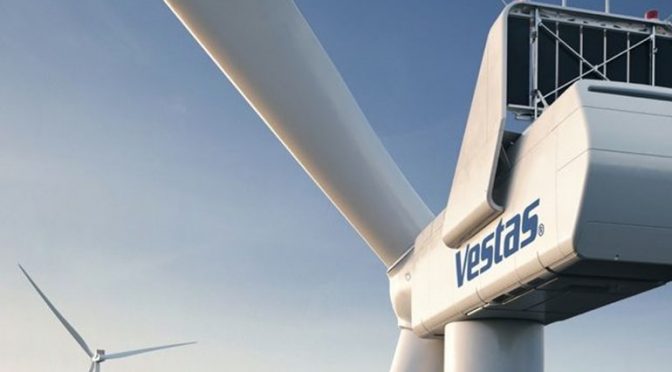Vestas, the global leader in wind energy solutions and wind turbine manufacturing, launches a new circularity roadmap, detailing a comprehensive set of commitments that will be implemented across our value chain to accelerate our journey to achieve zero-waste turbines for 2040. Through the roadmap, Vestas aims to set a new benchmark for the wind industry within circularity and waste reduction as the first wind industry leader to implement a broad circularity approach. As our circularity plan matures, Vestas aims to develop the first fully circular wind turbine, capable of keeping turbine materials in circulation throughout the value chain for longer than ever.
“The elimination of waste from the life cycle of the turbine depends on the construction of a completely circular value chain. To be successful on this journey, it is crucial that industry leaders build mature pathways to circularity and ensure they are fully embraced across their value chains as this will help nurture technological innovation, material volume and the stakeholder collaboration needed to grow an industry-wide circular. economy. This approach is at the heart of Vestas’ circularity roadmap and through it, we aim to pave the way towards a fully circular economy for the wind industry, ”says Lisa Ekstrand, Senior Director and Head of Sustainability at Vestas.
The roadmap marks an evolution of the previously announced ambition to produce zero-waste turbines by 2040, launched as part of Vestas’ global sustainability strategy entitled “Sustainability in everything we do”. Add more detailed and ambitious commitments as well as organizational governance to execute these commitments. The roadmap also outlines circularity paths for the entire Vestas value chain by setting new targets in three key areas: design, operations and material recovery.
In design, the roadmap raises the level of ambition from last year’s announcement by adding commitments to increase material efficiency by 90 percent, achieve 100 percent rotor recyclability, and reduce supply chain waste. by 50 percent, all by 2030. Across all operations, Vestas is committed to expanding efforts to renovate and reuse turbine components, while regionalizing our repair and renovation infrastructure where possible.
While the major components of a turbine have already been largely overhauled, the roadmap commits Vestas to achieving total remanufactured component utilization of 55 percent by 2030 and 75 percent by 2040, largely through the creation of new repair circuits for minor components. This will lead to further waste reduction, while reducing carbon emissions and driving local job creation.
Within materials recovery, Vestas is committed to reducing the amount of manufacturing waste that ends up in landfill to less than 1 percent, as well as ensuring that more than 94 percent of manufacturing materials are recycled by 2030. This marks a significant 52 percent increase in materials being recycled. recycled today.
The new circularity roadmap will ensure that Vestas can continue to offer competitive and differentiated solutions, providing business case certainty for customers in an evolving global energy market environment. With sustainability metrics increasingly integrated into the sales bidding process, and regulation around waste management and circularity practices tightening in certain markets such as France and the Netherlands, waste reduction is taking place. becoming an increasingly frequent factor in market dynamics throughout the European energy landscape.
Through our ongoing circularity journey, Vestas aims to accelerate the adoption of circularity practices across the industry by fostering close collaboration with all stakeholders in our value chain and by leveraging our industry-leading scale and extensive network. supply chain.


